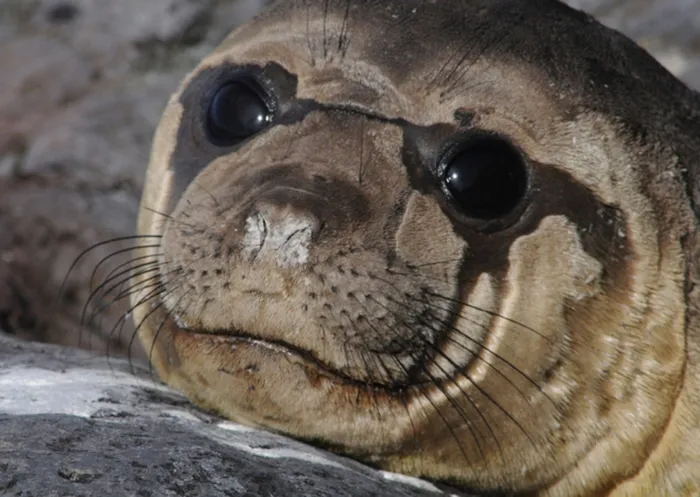Island research ‘must be relevant’

Southern Elephant Seal numbers on Marion Island have stabilised and have begun increasing after a sharp decline in the 1990s. Southern Elephant Seal numbers on Marion Island have stabilised and have begun increasing after a sharp decline in the 1990s.
JOHN YELD
Environment & Science Writer
THE GOVERNMENT will commit the necessary funding to keep its far-flung research bases at places like Marion Island fully functioning, so that the science undertaken there can help to keep the country competitive internationally.
But it will also ensure the scientific teams using these bases reflect the transformation needed in South African society, and that their research is relevant for this society, says Deputy Minister of Public Works Hendrietta Bogopane-Zulu.
Speaking at the inauguration of the new research base on Marion Island on Friday night, Bogopane-Zulu said: “We need to ensure these are not just areas where people can gather PhDs, but that they produce information that can be used to inform policy and decision-making and South Africa’s position in international society.”
The state-of-the-art base cost R200 million and was 10 years in the planning and construction.
Most of the old base, apart from some structures deemed to be of historical value, will be demolished after an environmental impact assessment has been completed.
Bogopane-Zulu said her department was the custodian of the state’s assets and these included the Marion Island facility and the weather station on Gough Island, which is a British possession.
“We remain committed to ensuring that these properties are utilised by South Africans.”
But the department also intended using the islands “as they’ve never been used before” by offering an opportunity to work there as a reward for the best of the young people who joined her department to train as artisans.
“We are committed to ensuring that these places are not the privilege of the few, but more and more young South Africans begin to understand and respect these islands,” she said.
Dr Monde Mayekiso, deputy director-general of the Environmental Affairs Department and the “client” managing South Africa’s scientific programmes in Antarctica and the sub-Antarctic islands like Marion, said the 1947/8 annexation of the Prince Edward Island group (Marion and Prince Edward) had been “a stroke of genius” as it had made it possible to establish a weather station there.
“Of great significance is the long-time series of weather data at Marion Island. This contributes to our ability to predict weather patterns and extreme events on mainland South Africa, which is vital in the agriculture and transport sectors, and crucial in the protection of lives and properties.”
The gauges on Marion were part of an international network that could give warning of potentially devastating events like tsunamis, he added.
“In the light of additional challenges associated with climate change, it is imperative that we continue with this time series and develop additional capacity for analysis and interpretation of such data.”
Veteran Marion Island researcher Professor Marthan Bester, of Pretoria University, whose monitoring of the southern elephant seal population on the island is the longest such programme for marine mammals in the world, said
: “I thought it would be hard, but in fact this move has been exceptionally easy, and I’ve already accepted this new base. It’s just a much better facility and easy to live in, and I believe we can be proud of it.”
But SABC cameraman Etienne de Beer, who spent the 1976/7 season on Marion and who went back again this week, said he was not convinced that a “five-star” new facility had been necessary. He could see a number of changes to the island, including changes in vegetation and the disappearance of Rockhopper Penguins from around the base area.
john.yeld@inl.co.za